May 1610. Caravaggio is in Naples working on the last picture he’d ever paint.
Two months later, he died in mysterious circumstances. But it was during his final tumultuous years that Caravaggio made some of his most striking works.
The Martyrdom of Saint Ursula (1610) is Caravaggio’s last documented painting.
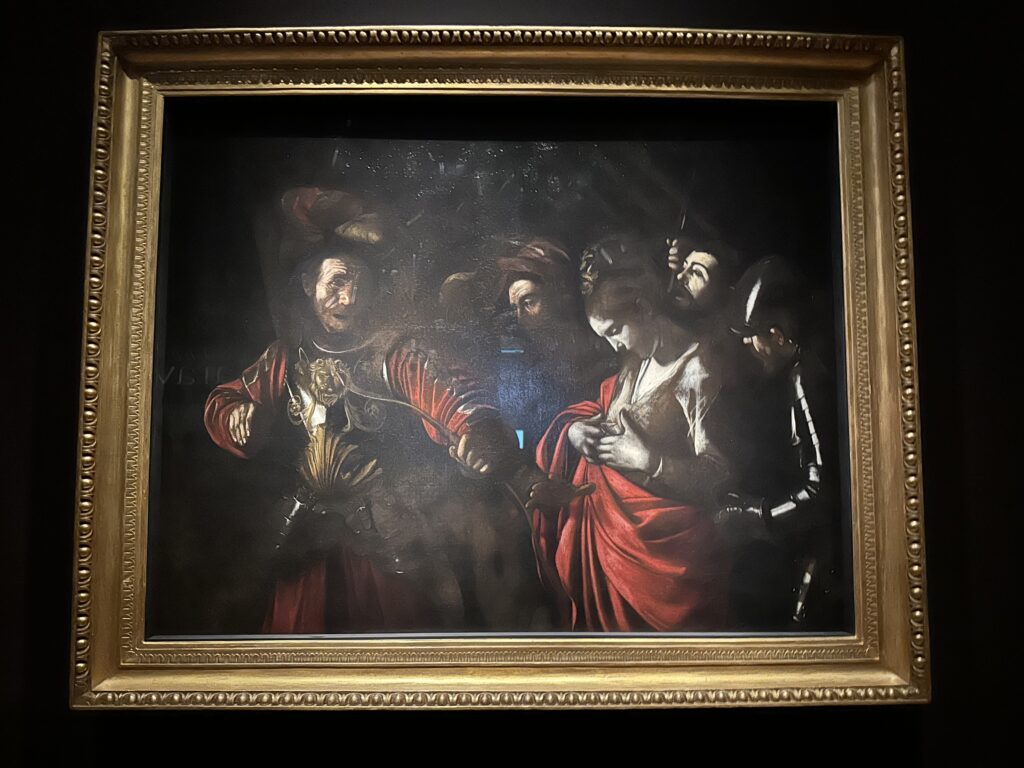
Michelangelo Merisi da Caravaggio, The Martyrdom of Saint Ursula, 1610, Intesa Sanpaolo Collection (photo private)
His characteristic style includes tightly cropped scenes and dramatic lighting. He used real models with dirty feet and grimy fingernails.
The Martyrdom of Saint Ursula depicts a scene from the legend of Saint Ursula, a Christian princess whose 11,000 virgin followers were massacred in Cologne by the Huns.
The Prince of the Huns threatened to kill Ursula unless she married him, but she refused to compromise her Christian faith and was martyred.
The artist narrates Saint Ursula’s final moment through a carefully orchestrated arrangement of hands: the archer’s guilty grip, still tense from loosing the deadly arrow; a bystander’s helpless, outstretched palm; and Ursula’s own hands, delicately framing her fatal chest wound.
In a striking twist, Caravaggio inserts himself into the scene. His self-portrait peers over the saint’s shoulder, his face unnaturally pale and mouth opened. This bold artistic choice elevates Caravaggio from creator to witness, possibly even implicating himself in Ursula’s tragic fate.
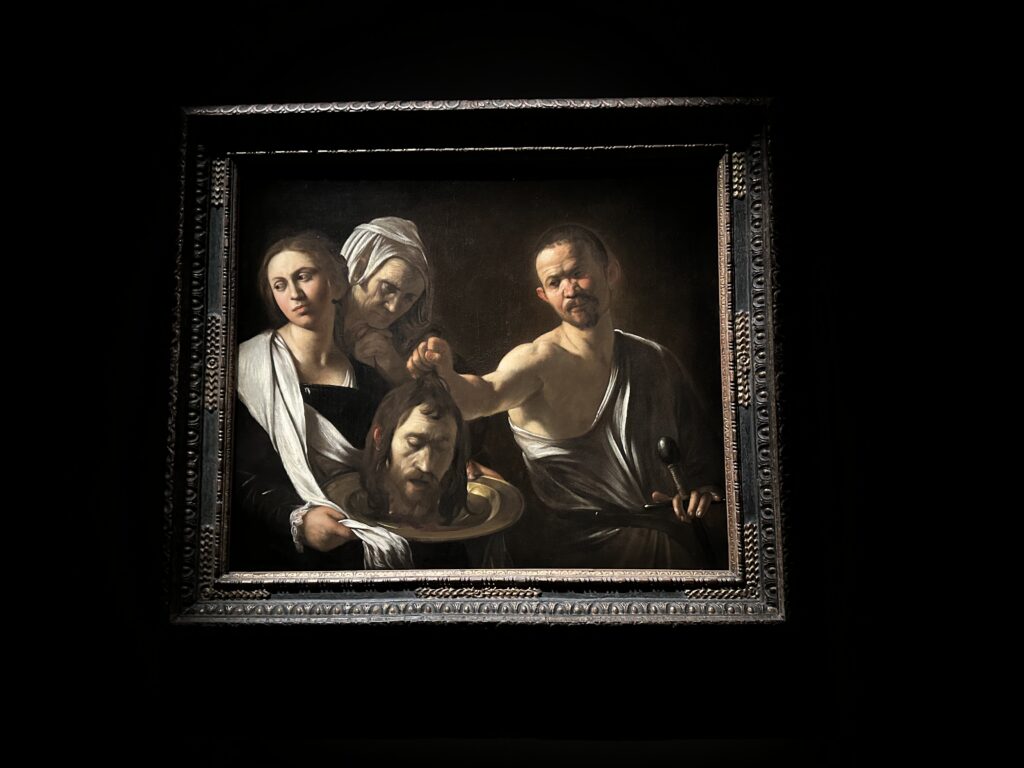
Michelangelo Merisi da Caravaggio, Salome receives the Head of John the Baptist (about 1609-10), The National Gallery (photo private)
Viewer is confronted with the horror of the severed head, the brutish power of the executioner, the old woman’s sorrow, and the complex revulsion of Salome who, at her mother’s bidding, had requested Saint John’s head on a platter.
The artist’s signature chiaroscuro technique dramatically illuminates the gruesome centerpiece: the freshly severed head of John the Baptist. Crucially, Caravaggio positions this grisly trophy at the viewer’s eye level, creating an unsettling intimacy that forces us to confront the horror as if it were mere inches from our face.
Far from triumphant, Salome recoils slightly. Caravaggio captures the exact moment where revulsion battles with a sense of duty to her mother’s request. The platter, poised to receive its grim burden, becomes a symbol of the irreversible consequences of her actions.
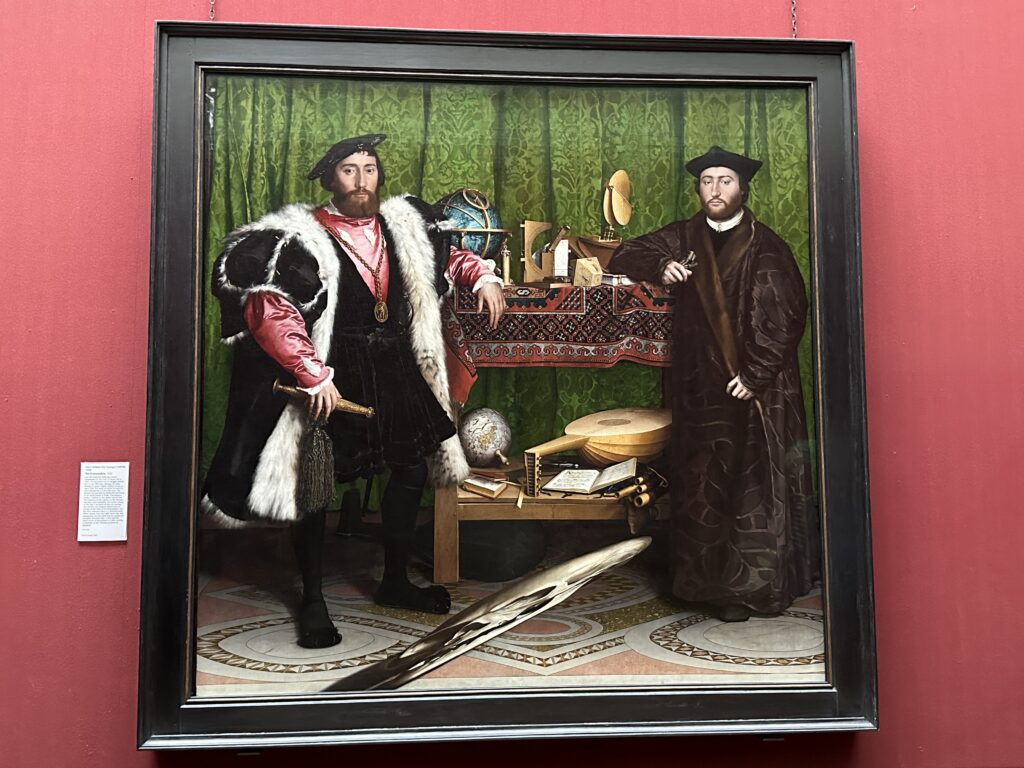
Hans Holbein the Younger, The Ambassadors (1533), The National Gallery (photo private)
The Ambassadors is one of the most celebrated works of the Northern Renaissance.
Jean de Dinteville (left) was a French ambassador to the court of Henry VIII. On the right is Georges de Self, Bishop of Labour.
This painting is notable not only for its exceptional detail and technical mastery but also for its rich symbolism.
The broken string of the lute is symbolic of discord, perhaps the religious tensions during the Reformation. In the top left-hand corner of the picture is a silver crucifix, which can be interpreted as a symbol of the centrality of faith amidst the complexities of the material and intellectual world around it.
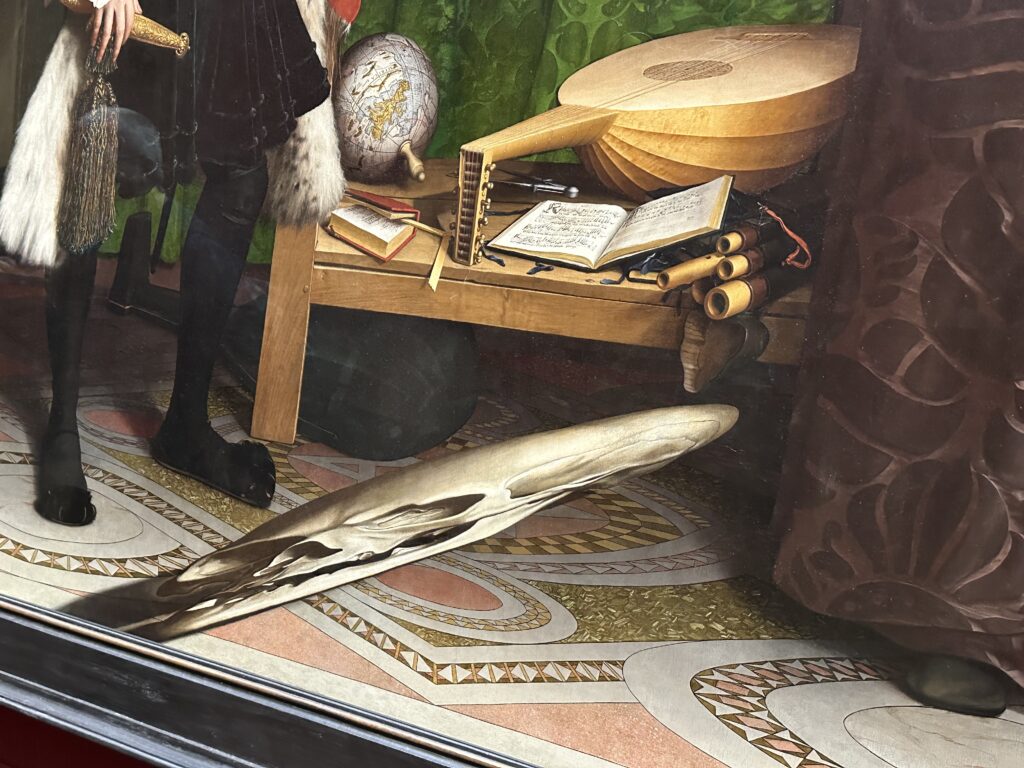
One of the most intriguing aspects of the painting is the anamorphic skull that stretches across the bottom foreground. This distorted image can only be properly viewed from a specific angle.
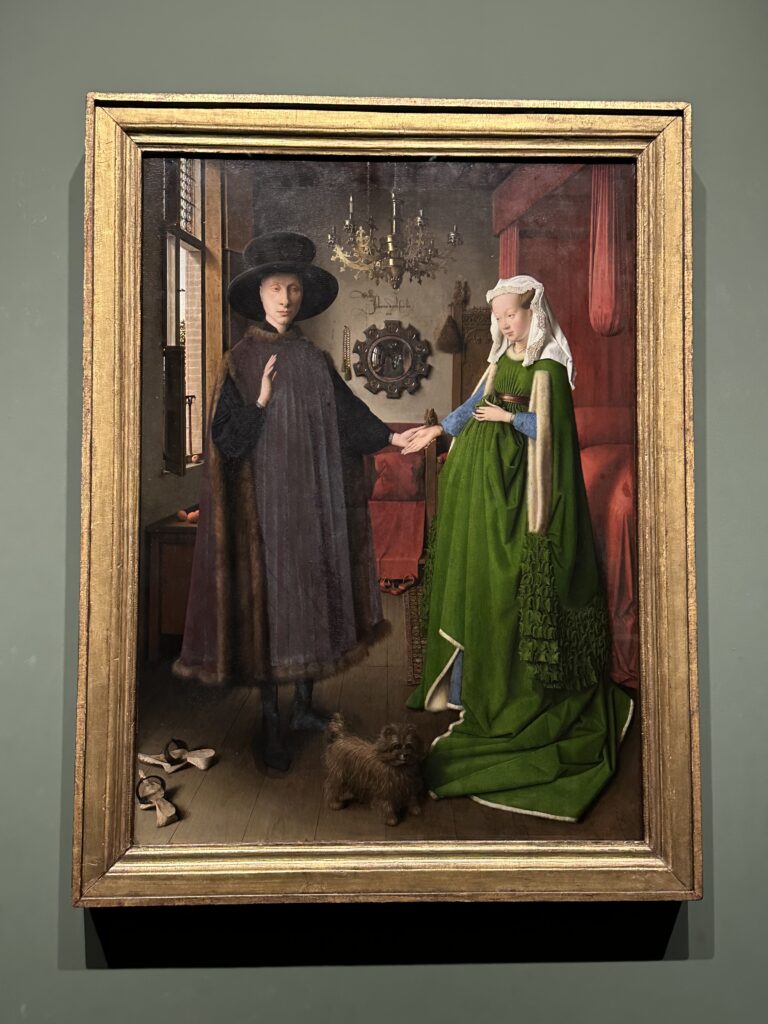
Jan van Eyck, The Arnolfini Portrait, 1434, The National Gallery (photo private)
Jan van Eyck’s The Arnolfini Portrait stands as a cornerstone of early Netherlandish painting and remains one of the most scrutinized works in Western art history. This captivating double portrait is believed to depict Giovanni di Nicolao Arnolfini, a prosperous Italian merchant, alongside his presumed wife, Giovanna Cenami.
Van Eyck’s masterpiece embodies the Renaissance’s burgeoning humanistic ideals, celebrating individual identity and meticulous observation of the natural world.
In this painting, Van Eyck uses a plethora of details that serve both aesthetic and symbolic purposes. For instance:
The convex mirror reflects the entire room, including the artist himself, suggesting a presence beyond the depicted scene.
The single lit candle of the chandelier might symbolize the presence of God or serve as a wedding tradition symbolising unity.
The dog represents fidelity and loyalty, common symbols in marital contexts.
The Arnolfini Portrait challenges viewers to look closely and consider the interplay of the visible and the hidden, the represented and the suggested.